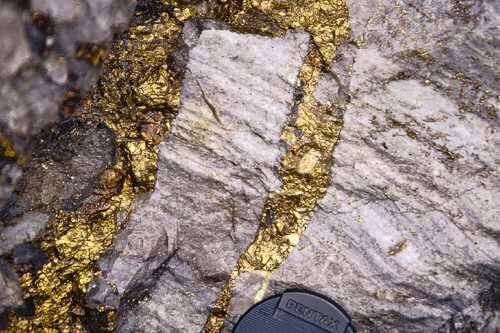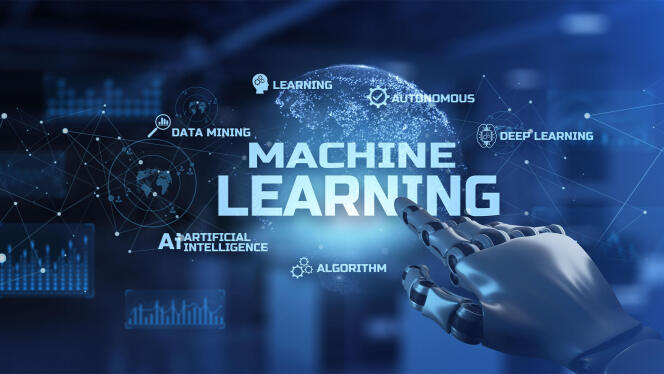The Role of Machine Learning in Predicting Mineral Deposits

For over 40 years, GIS-based mapping has been a fundamental tool in mineral exploration, helping geologists to visualize and analyze geological data. In recent years, the field has witnessed a significant transformation with the introduction of machine learning (ML) techniques.
This article explores how advanced ML algorithms—particularly Random Forest (RF), Convolutional Neural Networks (CNN), and Graph Convolutional Networks (GCN)—are enhancing the accuracy and efficiency of mineral deposit prediction.
Understanding Machine Learning
Machine learning (ML) is a subset of artificial intelligence (AI) that enables computers to learn from data and make predictions or decisions without explicit programming. It encompasses various algorithms that can be broadly categorized into supervised learning, unsupervised learning, and reinforcement learning.
Supervised Learning: Algorithms learn from labeled data and make predictions based on that training.
Unsupervised Learning: Algorithms identify patterns and relationships in unlabeled data.
Reinforcement Learning: Algorithms learn by interacting with the environment and receiving feedback.
Machine Learning and Its Relevance to Mineral Exploration
In the context of mineral exploration, ML techniques analyze complex geological data to identify patterns and predict the locations of undiscovered mineral deposits.
The integration of remote sensing data with machine learning methods has revolutionized the processing and interpretation of geological data. Machine learning techniques such as Random Forest (RF), Convolutional Neural Networks (CNN), and Graph Convolutional Networks (GCN) are increasingly used to analyze complex datasets, improve feature extraction, and enhance mineral exploration.
Remote Sensing Data and Machine Learning
Remote sensing technologies offer various platforms—satellite, airborne, and ground-based instruments—to capture data at different spatial, spectral, and temporal resolutions. This data is essential for mapping geological features and overcoming traditional mapping challenges (Prost, 2014; Toth and Jóźków, 2016).
Remote sensing data has been utilized for several purposes, including:
Lithological and Structural Mapping: Identifying rock types and geological structures.
Alteration Mapping: Detecting changes in mineral composition and alterations related to ore deposits.
Indicator Minerals Mapping: Finding minerals associated with specific types of mineralization.
Machine learning methods can be classified into five categories:
1. Dimensionality Reduction: Techniques such as Principal Component Analysis (PCA) reduce the number of features while preserving essential information.
2. Classification: Methods like RF and CNN categorize geological features based on training data.
3. Clustering: Techniques such as K-means and DBSCAN group similar features together.
4. Regression: Predictive models estimate mineral concentrations or the likelihood of mineral deposits.
5. Deep Learning: Advanced models like GCNs and CNNs capture complex relationships in high-dimensional data.
Random Forest (RF)
RF is an ensemble learning method that combines multiple decision trees to create a robust model. This algorithm aggregates several weak classifiers to form a single strong classifier, making it effective at capturing complex and nonlinear relationships between mineral deposits and geological features. RF's resilience to overfitting and its ability to handle various data types without extensive preprocessing contribute to its widespread use in mineral exploration (Breiman 2001).

Convolutional Neural Networks (CNN)
CNNs are deep learning algorithms particularly adept at processing spatial data. They analyze fixed-size images or pixel patches, considering the connectivity of neighboring pixels to extract rich spatial information. This capability makes CNNs ideal for processing geological maps and satellite imagery, enabling the capture of spatial relationships between mineral deposits and geological features (LeCun et al. 1998).
Graph Convolutional Networks (GCN)
GCNs are an emerging architecture designed to handle graph-structured data. They aggregate information from neighboring vertices in a graph, which is particularly useful for modeling spatial relationships in mineral exploration. GCNs can account for spatial anisotropy and handle irregularly shaped study areas, making them a valuable tool for future research (Kipf and Welling 2017; Zuo and Xu 2023).
WE ARE KIMIA
Kimia Holding stands as a diversified conglomerate with a strong foothold in various sectors including mining and mineral resources, tourism services, livestock and poultry, agriculture, and foreign trade foreign trade in Iran and across the Middle East. However, it is within the realm of mining that Kimia Holding has truly distinguished itself, garnering recognition for its unwavering commitment to excellence and innovation.
CONTACT KIMIA
Our experts at Kimia Holding eagerly await your inquiries and are prepared to provide insightful answers or address any questions you may have. Should you require further details or wish to share your opinions, please don't hesitate to reach out. Your engagement is valuable to us.
Recent advancements in ML have significantly improved the prediction of mineral deposits. Here are some notable developments:
Interpretable Nonlinear Bayesian Decomposition: Mao et al. (2023) introduced a Bayesian decomposition model that combines nonlinear modeling with interpretability. This approach decomposes the model into parts with respect to individual predictor variables, enhancing the clarity of mineral prospectivity models (Mao et al. 2023).
Projection Pursuit Random Forest (PPRF): Chen and Xiao (2023) applied PPRF to model prospectivity for porphyry Cu-Mo deposits. Their results showed that PPRF outperforms traditional RF methods in terms of accuracy and sensitivity to unbalanced data (Chen and Xiao 2023).
Class-Balanced Focal Loss Function: Zhang et al. (2023) proposed a novel loss function to address data imbalance in ML models. Their class-balanced focal loss function improves performance by handling both class imbalance and information imbalance within the feature space (Zhang et al. 2023).
Advances in Machine Learning for Mineral Exploration
Advantages and Challenges of Machine Learning in Mining
Enhanced Accuracy: ML models, such as RF and CNN, provide improved accuracy by analyzing complex data relationships.
Cost Efficiency: By reducing the need for extensive fieldwork and optimizing exploration efforts, ML techniques help lower costs.
Advanced Data Handling: ML algorithms excel at interpreting diverse data types, including geophysical and geochemical data.
Future Directions
The future of ML in mineral exploration holds great promise. Emerging technologies, such as digital twins and advanced robotics, combined with ML, are expected to further enhance exploration capabilities. The integration of big data and AI will continue to drive innovations in the field (The Role of AI and Automation in the Future of Mining).
Conclusion
Machine learning has revolutionized mineral exploration by improving the accuracy, efficiency, and cost-effectiveness of predicting mineral deposits. As technology advances, the integration of ML with other cutting-edge methods will be essential for addressing future challenges and seizing new opportunities in the mining industry.
For more detailed insights on related topics, explore our articles on Exploring Rare Earth Elements: Their Importance and Extraction Methods.
References
1. Breiman, L. (2001). Random Forests. Machine Learning, 45(1), 5-32.
2. LeCun, Y., Bottou, L., Bengio, Y., & Haffner, P. (1998). Gradient-Based Learning Applied to Document Recognition. Proceedings of the IEEE, 86(11), 2278-2324.
3. Kipf, T. N., & Welling, M. (2017). Semi-Supervised Classification with Graph Convolutional Networks. arXiv preprint arXiv:1609.02907.
Advantages
Data Quality: The performance of ML models is highly dependent on the quality and quantity of input data.
Expertise Requirement: Developing and implementing ML models necessitates both domain knowledge and technical skills.
Integration: Incorporating ML into existing workflows requires significant investment and adaptation.
Challenges
Written by Zamin Kavan Company (ZKC),
ZKC is a subsidiary of Kimia Holding, specializes in the exploration, exploitation, and processing of diverse mineral resources. It is prepared to offer technical and engineering services to stakeholders in the mining industry, encompassing consultation, design, and implementation phases. Leveraging state-of-the-art technologies and expert teams, the company has successfully completed numerous projects, significantly contributing to the development of the mining industry in the country.





